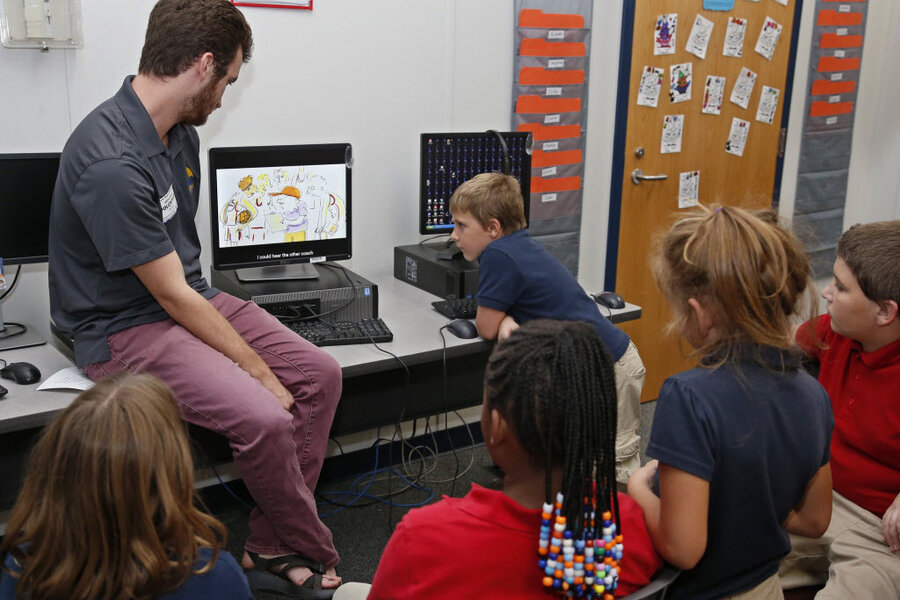The other side of incarceration: What happens to children left behind?
Loading...
New data sheds light on another population enduring the high rate of mass incarceration in the United States: the children of parents in prison.
More than five million US children have experienced one parent serving time, according to research from Child Trends, which used the 2011-2012 National Survey of Children’s Health to look at the rate of parents serving prison time and how their children are affected. That's three times earlier estimates, which only counted children with a parent currently incarcerated.
About one in every 14 children has experienced having a parent behind bars, and for black children, the rate was one in nine, according to the report, called Parents Behind Bars: What Happens to Their Children? Children living in poverty are more than three times as likely to have experienced the incarceration of a parent as children in families with incomes at least twice the poverty level.
Child Trends found that children with parents in prison were more likely to experience a higher incidences of other stressful, potentially traumatic, events than their peers. They are also more likely to under-perform and be less engaged in school and receive less attention from parents overall.
"If your parent is a soldier overseas, everyone says, 'Oh, you're brave,' " Shari Ostrow Scher, president of the Children of Incarcerated Parents Partnership told the Associated Press. "When your parent is in prison, it's the same issue of loss and separation, and in neither case did the kid sign up for this. But you're not viewed in the same heroic way."
Children of incarcerated parents struggle with separation from their parents, but also with stress associated with visitation.
Only about 42 percent of incarcerated parents with children under 18 are visited by them, according to federal statistics. The Prison Policy Initiative recently found that distance is a deterrent, calculating that 63 percent of state prison inmates are behind bars more than 100 miles from their families, often requiring a full day just to make a brief visit.
For a child, visiting a prison is, of course, frightening, and creating prison policies to help kids navigate heavy security and strict rules is complicated, even though there is a preponderance of evidence that shows children are reassured when an incarcerated parent can be hugged and visited.
“For a number of children, there's anxiety waiting to go into the jail – some are scared," Ms. Ostrow Scher says. "The lack of physical contact with your parents is hard."
On the state level, Washington is leading on policies to foster positive relationships between parents in prison and their children, including child-friendly visiting areas in every one of its 12 state prisons which have books and games, according to the AP.
But nationally, "progress has been slow," says Child Trends researcher David Murphey, the report's lead author. "This is a vulnerable group of kids that is often hidden from public view. We need to pay more attention."
This report contains material from the Associated Press.






